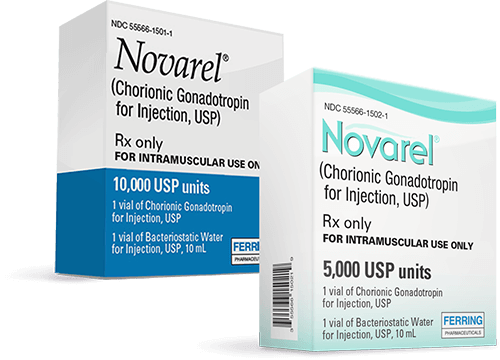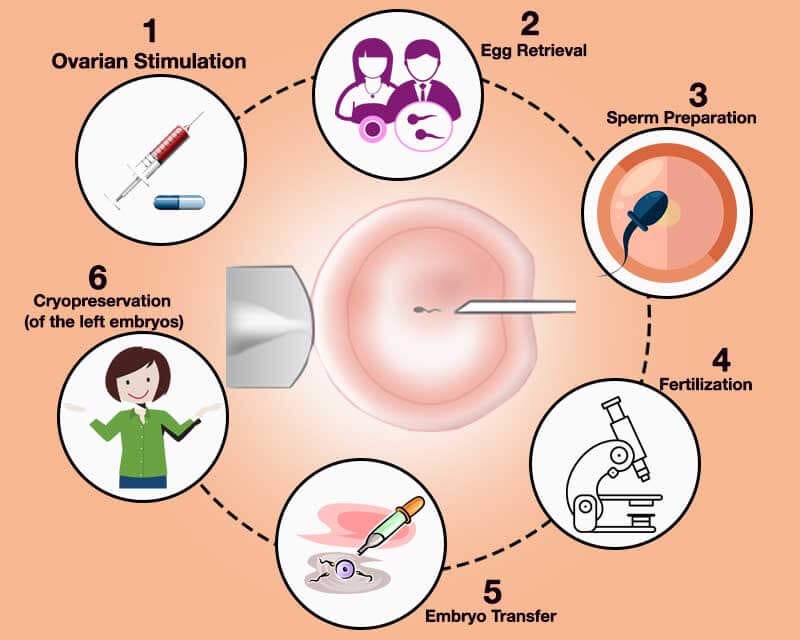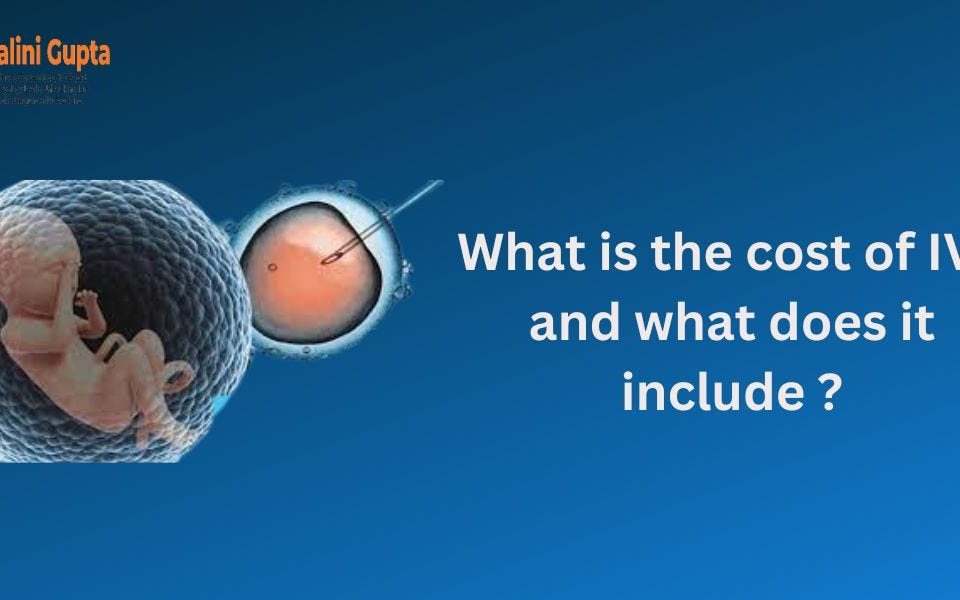
Which Is Associated with IVF-ET? Exploring the World of In Vitro Fertilization and Embryo Transfer
April 22, 2025
Does Health Insurance Cover IVF? Your Guide to Understanding Coverage and Costs
April 23, 2025How Much Does an IVF Procedure Cost? Your Guide to Understanding the Price Tag
Starting a family can feel like a dream come true, but for some, the journey isn’t as simple as they’d hoped. If you’re exploring in vitro fertilization (IVF), you’re probably wondering about the cost—and trust me, you’re not alone. IVF is a life-changing option for many, yet the price can seem overwhelming at first glance. So, how much does an IVF procedure really cost? Let’s break it down together, step by step, with all the details you need to feel confident and informed.
In this guide, we’ll dive into the numbers, uncover hidden expenses, and share practical tips to make IVF more affordable. Plus, we’ll explore fresh insights—like how new research and real-life stories can shift your perspective on the process. Whether you’re just curious or ready to take the plunge, this is your one-stop resource for understanding IVF costs in 2025.
What Is IVF, and Why Does It Cost So Much?
IVF is a medical procedure where doctors help create a baby by combining an egg and sperm outside the body, then placing the resulting embryo into the uterus. It’s a big deal for people facing infertility, and it’s been around since the first “test-tube baby” was born in 1978. But here’s the catch: it’s not cheap. Why? Because IVF involves a team of experts, high-tech equipment, and a lot of personalized care.
Think of it like building a custom house. You’re not just buying materials—you’re paying for architects, builders, and inspectors to make sure everything goes perfectly. With IVF, you’ve got fertility specialists, lab technicians, and nurses working together, plus medications and cutting-edge tools. All of that adds up.
On average, one IVF cycle in the U.S. costs between $12,000 and $25,000, according to recent estimates from the White House in 2025. But that’s just the starting point. Costs can vary wildly depending on where you live, your specific needs, and what extras you might need along the way. Let’s unpack the pieces of this puzzle.
Breaking Down the Cost of an IVF Cycle
To really get a handle on IVF expenses, it helps to see what you’re paying for. Here’s a breakdown of a typical cycle, based on data from fertility clinics and government sources:
The Basics: What’s Included in the Base Price?
Most clinics quote a “base fee” for IVF, which usually covers:
- Monitoring appointments: Ultrasounds and blood tests to track your progress (about $1,500–$3,000).
- Egg retrieval: A minor surgery to collect eggs from the ovaries ($3,000–$5,000).
- Lab fees: Fertilizing the eggs and growing embryos in a lab ($3,000–$6,000).
- Embryo transfer: Placing the embryo into the uterus ($1,500–$3,000).
- Anesthesia: For the egg retrieval procedure ($500–$1,000).
For a single cycle, this base price often lands around $12,000 to $15,000. But here’s where it gets tricky: that’s not the whole story.
Medications: The Hidden Game-Changer
Fertility drugs are a huge part of IVF. They stimulate your ovaries to produce multiple eggs, boosting your chances of success. These meds can cost anywhere from $3,000 to $7,000 per cycle, depending on:
- Your age (older women may need higher doses).
- Your body’s response to the drugs.
- Whether you use brand-name or generic options.
Some people spend even more—up to $10,000—if they need extra rounds of meds or specialized treatments. It’s a big chunk of the bill, and insurance doesn’t always cover it.
Extra Procedures: When You Need More
Not everyone’s IVF journey is straightforward. Here are some add-ons that can bump up the cost:
- Intracytoplasmic Sperm Injection (ICSI): If sperm quality is an issue, doctors inject sperm directly into the egg. Add $1,000–$2,500.
- Preimplantation Genetic Testing (PGT): Screening embryos for genetic issues costs $3,000–$6,000, plus biopsy fees.
- Frozen Embryo Transfer (FET): Using frozen embryos in a later cycle runs $3,000–$5,000.
These extras can push your total to $20,000 or more per cycle. And since many people need multiple cycles—about two to three on average—the numbers can climb fast.
A Quick Cost Snapshot
Here’s a simple table to see it all at a glance:
| Service | Cost Range |
|---|---|
| Base IVF Cycle | $12,000–$15,000 |
| Medications | $3,000–$7,000 |
| ICSI | $1,000–$2,500 |
| PGT | $3,000–$6,000 |
| FET | $3,000–$5,000 |
| Total Possible Range | $12,000–$30,000+ |

Why Costs Vary: Factors That Shape the Price
No two IVF journeys are the same, and neither are the bills. Here’s what influences how much you’ll pay:
Where You Live
Location matters—a lot. In big cities like New York or Los Angeles, clinics charge more because of higher overhead costs. A cycle in Manhattan might hit $20,000, while the same treatment in a smaller town could be closer to $12,000. Even within states, prices fluctuate. For example, California’s new laws requiring insurance to cover IVF (starting in 2025) might lower out-of-pocket costs for some, but raise premiums for everyone else.
Your Age and Health
Younger women (under 35) often have higher success rates, meaning fewer cycles and lower overall costs. But if you’re over 40, you might need more meds or extra cycles, driving up expenses. Health conditions like endometriosis or low sperm count can also mean more procedures, adding to the tab.
Clinic Quality and Reputation
Top-tier clinics with high success rates—like those at Yale or Stanford—sometimes charge a premium. You’re paying for expertise, advanced tech, and a better shot at a baby. Smaller clinics might be cheaper but could have lower success rates, so it’s a trade-off.
Insurance Coverage (or Lack Thereof)
Only about 20 states in the U.S. mandate some form of infertility coverage, and even then, IVF isn’t always included. If you’re lucky, insurance might cover part of the cost—say, $5,000–$10,000 per cycle. Without it, you’re footing the full bill. Check your policy, because this can make or break your budget.
How Many Cycles Will You Need?
Here’s a tough truth: IVF doesn’t always work the first time. Success rates depend on age, health, and a bit of luck. According to the CDC’s 2021 data (the latest detailed stats available), here’s what you might expect:
- Under 35: 50% chance of a live birth per cycle.
- 35–37: 38% chance.
- 38–40: 25% chance.
- Over 40: 10% chance or less.
Most people need two to three cycles, meaning costs can double or triple. If your first cycle costs $15,000, three cycles could total $45,000. That’s why planning ahead—and exploring ways to save—is so important.
Interactive Quiz: What’s Your IVF Cost Estimate?
Let’s make this personal. Answer these quick questions to get a rough idea of your potential costs:
- How old are you?
- A) Under 35
- B) 35–40
- C) Over 40
- Where do you live?
- A) Big city
- B) Suburbs or small town
- Do you have insurance that covers IVF?
- A) Yes
- B) No
Results:
- Mostly A’s: You might pay $12,000–$20,000 for one cycle, with a good shot at success.
- Mix of A’s and B’s: Expect $15,000–$25,000 per cycle.
- Mostly B’s or C’s: Costs could climb to $20,000–$30,000+ per cycle, especially with multiple tries.
This is just a starting point—your clinic can give you a precise quote.
Beyond the Numbers: Hidden Costs You Might Miss
The price tag on an IVF cycle doesn’t tell the whole story. There are sneaky expenses that can catch you off guard if you’re not prepared.
Time Off Work
IVF isn’t a one-day deal. A single cycle takes 3–6 weeks, with multiple doctor visits. If you don’t have paid leave, lost wages could add hundreds or thousands to your costs. For hourly workers, this hits especially hard.
Travel and Lodging
Live far from a clinic? You might need to travel for appointments or stay overnight for procedures. Gas, flights, or hotel bills can easily tack on $500–$2,000, depending on distance.
Emotional Support
Infertility is tough, and IVF can be an emotional rollercoaster. Therapy or support groups (often $50–$150 per session) can help, but they’re rarely included in cost estimates. It’s not just about money—it’s about keeping your sanity.
Storage Fees for Frozen Embryos
Got extra embryos? Freezing them costs $500–$1,000 upfront, plus $300–$600 per year to store. If you’re planning more kids later, this adds up over time.
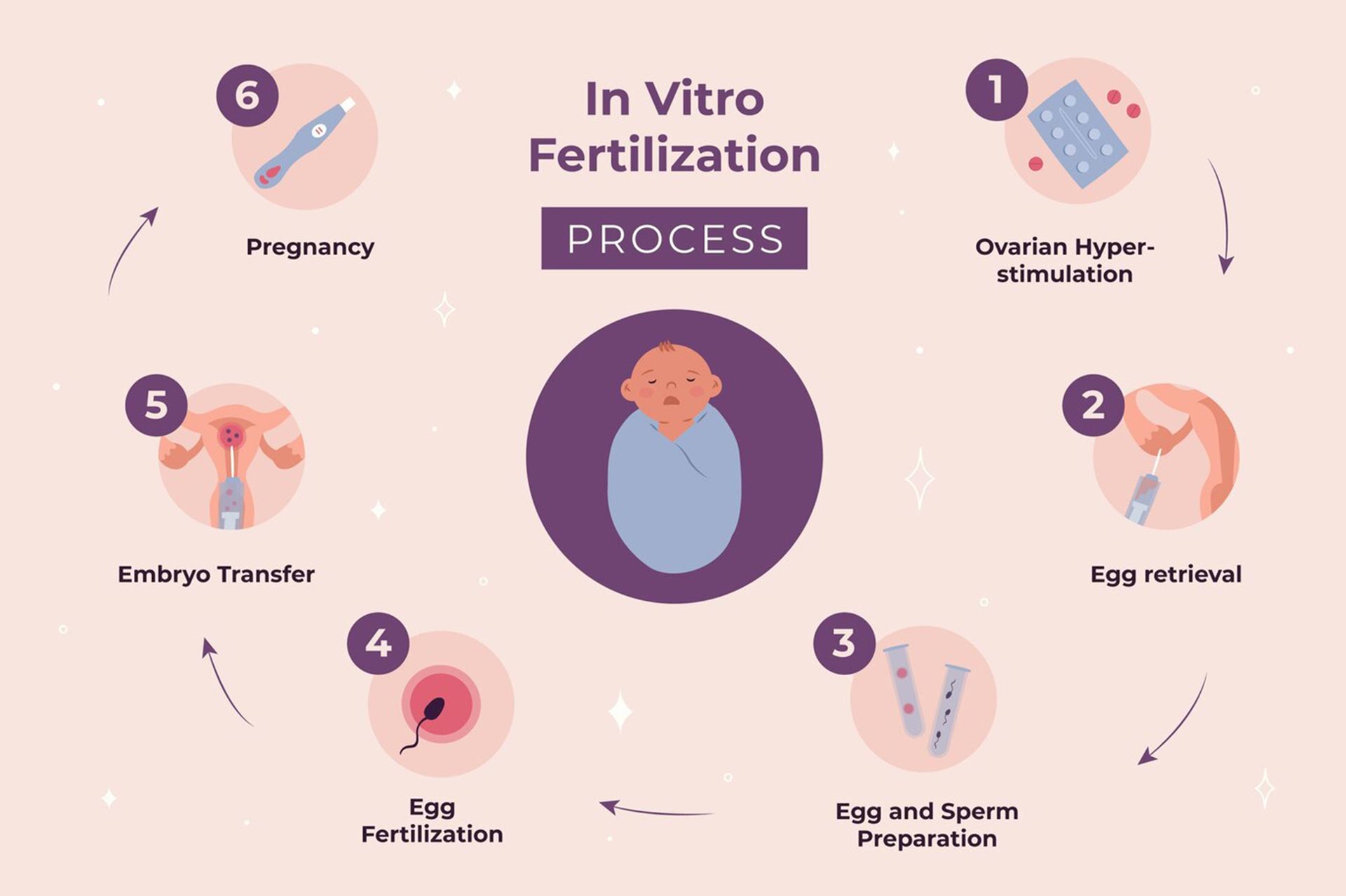
Making IVF More Affordable: Practical Tips
IVF might feel like a financial mountain, but there are ways to climb it without breaking the bank. Here’s how to cut costs and stretch your dollars:
Shop Around
Clinics vary in price and success rates. Call around, compare quotes, and ask about package deals. Some offer discounts for multiple cycles—like $25,000 for three tries instead of $15,000 each.
Look for Grants and Financing
- Grants: Organizations like BabyQuest or the Starfish Foundation offer $5,000–$15,000 to help cover IVF. Apply early—these are competitive.
- Loans: Fertility-specific loans from companies like Prosper Healthcare Lending often have lower rates than credit cards.
- Employer Benefits: Some companies (like Starbucks or Google) now offer IVF coverage, even for part-time workers. Check your benefits package.
Consider Mini-IVF
Mini-IVF uses fewer drugs, dropping costs to $5,000–$7,000 per cycle. Success rates are lower, but it’s a budget-friendly option for younger patients or those with mild infertility.
Tax Breaks
In the U.S., medical expenses over 7.5% of your income are tax-deductible. If you spend $20,000 on IVF and earn $50,000, you could deduct about $16,250. Talk to a tax pro to maximize this.
Real-Life Example: Sarah’s Story
Sarah, a 32-year-old teacher from Texas, saved big by combining strategies. Her first cycle cost $18,000, but she got a $5,000 grant, used a clinic discount for a second cycle ($12,000), and claimed a tax deduction. Total out-of-pocket? Just under $25,000 for two cycles—and she’s now a mom.
The Latest Trends: What’s Changing IVF Costs in 2025?
IVF isn’t static—new tech and policies are shaking up the price game. Here’s what’s hot right now, based on recent research and chatter on platforms like X:
Simplified Lab Systems
A 2024 study from the National Institutes of Health highlighted a breakthrough: simplified IVF labs that cut costs by up to 90%. These setups use basic equipment, making IVF more accessible in rural areas or developing countries. In the U.S., some clinics are testing this, potentially dropping base fees to $8,000–$10,000.
Insurance Mandates
States like California and New York are pushing for broader IVF coverage. While this might raise premiums (as some X users grumble), it could slash out-of-pocket costs for patients. By 2026, experts predict 25+ states might follow suit.
At-Home Monitoring
New devices let you track hormone levels at home, reducing clinic visits. A 2025 pilot program at Boston IVF found this saved patients $500–$1,000 per cycle. It’s not widespread yet, but it’s a game-changer on the horizon.
IVF Around the World: A Global Price Check
Curious how the U.S. stacks up? IVF costs vary globally, and some people even travel abroad to save money. Here’s a peek:
- Canada: $10,000–$15,000 per cycle, with some public funding in provinces like Ontario.
- UK: £5,000–£8,000 ($6,500–$10,500), plus free cycles via the NHS if you qualify.
- India: $2,000–$4,000, a fraction of U.S. prices, attracting “fertility tourists.”
- Australia: $8,000–$12,000, with Medicare rebates cutting costs by 50% for many.
Traveling for IVF—called fertility tourism—can save thousands, but factor in flights, hotels, and risks like language barriers or lower oversight.
The Emotional Price: Is IVF Worth It?
Money isn’t the only cost. IVF can test your patience, hope, and relationships. A 2024 Stanford study found infertile couples face higher rates of depression and divorce, especially when treatments fail. But here’s the flip side: for the 86,000+ babies born via IVF in the U.S. in 2021, the joy was priceless.
So, is it worth it? That’s your call. For some, like my friend Mia who spent $40,000 over three cycles, the answer was yes—her twins are now two years old. For others, the financial and emotional toll might lead to different paths, like adoption.
Poll: What’s Your Take?
What matters most to you in deciding on IVF?
- A) Cost
- B) Success rates
- C) Emotional impact
- D) All of the above
Drop your vote in the comments—I’d love to hear your thoughts!
Unique Insights: 3 Things You Won’t Find Elsewhere
Most articles stop at the basics, but let’s dig deeper. Here are three angles on IVF costs that don’t get enough attention:
1. The Cost-Per-Baby Myth
You’ll hear stats like “$50,000 per successful delivery.” But that’s an average, not your reality. A 1994 study in the New England Journal of Medicine pegged it at $66,667 for one cycle, rising to $114,286 by cycle six. Today, with better tech, it’s closer to $30,000–$50,000 for younger patients. The lesson? Your age and health matter more than broad estimates.
2. The Ripple Effect on Society
IVF isn’t just personal—it’s economic. A 2025 White House report argued that each IVF baby adds huge value to society (think future taxpayers). If subsidies cut costs, we could see 3.5% more births among childless women aged 30–39, per Stanford research. So, your IVF bill might shape more than your family.
3. The DIY IVF Experiment
Ever heard of at-home IVF kits? They’re not mainstream, but a small 2024 trial in Europe let patients self-administer some steps (like injections) with remote doctor guidance. Costs dropped to $6,000 per cycle, with a 20% success rate. It’s experimental, but it hints at a future where IVF gets cheaper and more DIY-friendly.
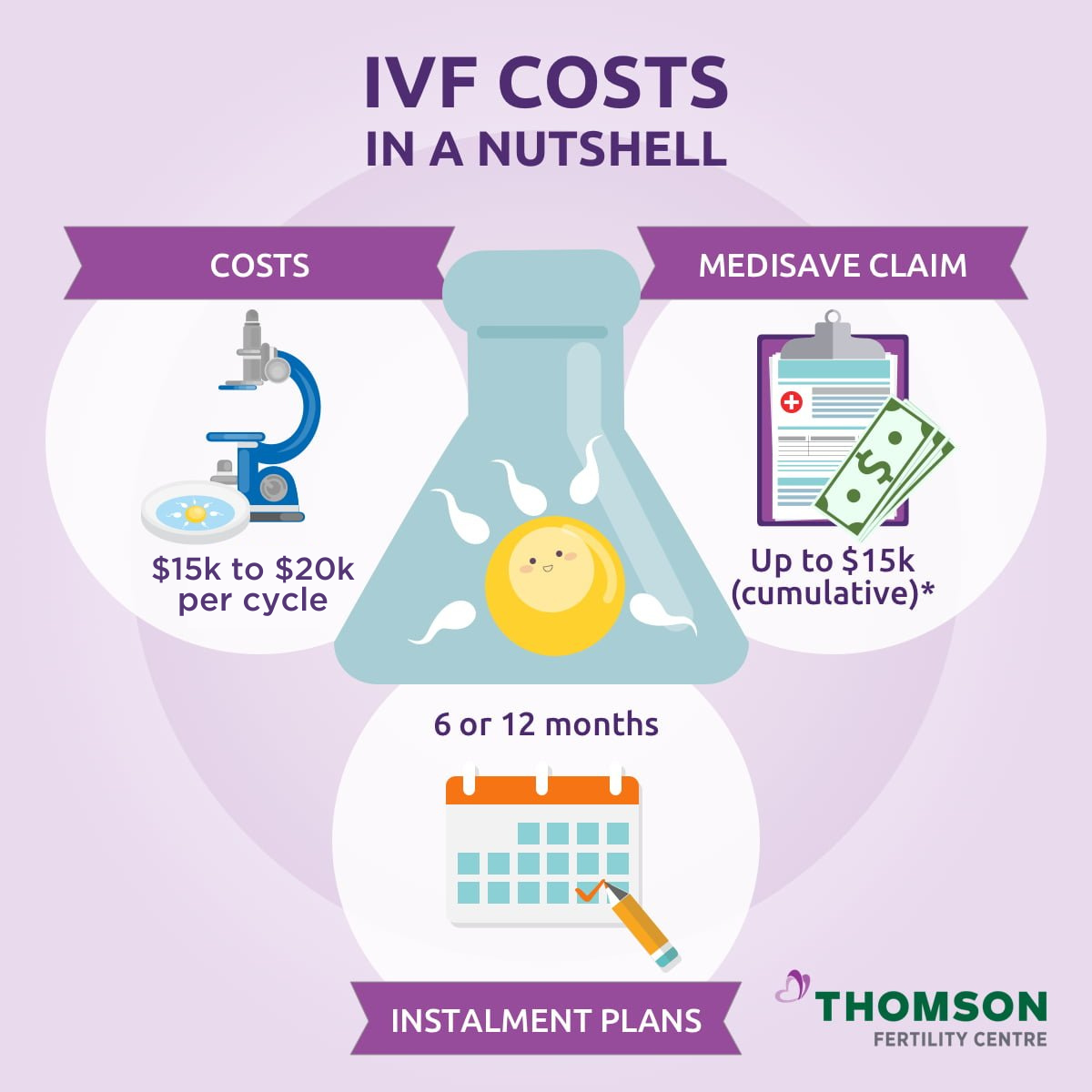
Your IVF Budget: A Step-by-Step Plan
Ready to crunch the numbers? Here’s a practical guide to build your IVF budget:
- Get a Quote: Call 2–3 clinics for detailed estimates, including meds and extras.
- Check Insurance: Ask your provider what’s covered—don’t assume.
- Estimate Cycles: Based on your age and health, plan for 1–3 tries.
- Add Hidden Costs: Budget $1,000–$3,000 for travel, time off, or support.
- Explore Savings: Apply for grants, look into mini-IVF, or negotiate with clinics.
Example Budget:
- Base cycle: $15,000
- Meds: $5,000
- 2 cycles: $40,000 total
- Travel: $1,000
- Grant: -$5,000
- Net Cost: $36,000
Tweak this to fit your life—it’s your roadmap.
Final Thoughts: What’s Your Next Step?
IVF costs are a big deal, no question. You might be looking at $12,000 for a single shot or $50,000+ for the whole journey. But it’s not just about the money—it’s about what you’re building: a family, a future. With smart planning, new trends, and a little grit, you can make it work.
So, where do you start? Maybe it’s a call to a clinic, a chat with your partner, or a peek at your savings. Whatever it is, you’ve got this. And if you’ve got questions or stories to share, drop them below—I’m here to listen.


